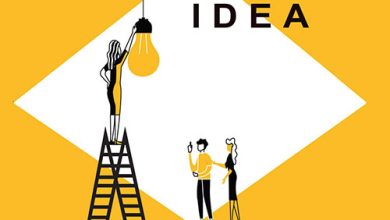BUILDING CAPACITY
TRAINING MAKETH THE MAN
Pallavi Pinakin explains the importance of designing unique training programmes
 A successful training programme can prove to be transformational for participants, whether it’s about learning a skill (like how to use new software), honing an existing capability (such as communicating with clients more effectively) or familiarising oneself with an important concept (diversity at the workplace, for instance).
A successful training programme can prove to be transformational for participants, whether it’s about learning a skill (like how to use new software), honing an existing capability (such as communicating with clients more effectively) or familiarising oneself with an important concept (diversity at the workplace, for instance).
However, to tap in to the full power of training, we need to steer clear of cookie-cutter programmes that are run without adaptation across multiple organisations and countries. While such schemes may offer some benefits, they lack the customisation that is critical to conducting effective training programmes. Certain elements may work well across contexts, but using the same programme is a poor strategy.
This doesn’t imply that you cannot rely on existing documents, materials and activities. It simply means than you approach the programme’s direction and structure afresh. The combination of existing and new elements that work best can be determined in due course. Whether the training is general or mission-specific, these steps will help you implement the necessary changes.
NEEDS AND GOALS While it is tempting to jump into action right away, it’s imperative to do your homework before you begin designing a programme. Ask the all-important questions: Why is training necessary? Who needs it? What are its learning objectives? What is the best way to achieve them? How much time can participants dedicate to learning?
Unfortunately, many training divisions skip this step altogether. They go straight to what they think is the ‘solution,’ without first understanding the problem. No wonder many employees consider learning and development to be a waste of time – after all, without conducting a needs analysis, you run the risk of implementing a programme that is irrelevant and ineffective.
If we determine participants’ needs, expectations and readiness, we’ll be far better prepared to develop a training programme that is effective. Conduct interviews, chat with multiple stakeholders, design pre-programme surveys, send online questionnaires and so on – and select those that work best for you and the organisation.
Then, based on the gaps that are identified in the needs evaluation, set goals for the programme. Ideally, the training should bridge the gap between existing and desired skills, performance and knowledge. The more specific and measurable the objectives, the clearer the outcomes will be.
DETAILED PLANS As with a building, your training workshop needs a detailed plan, before you begin construction in earnest. Based on the needs analysis, prepare a comprehensive blueprint: How many hours of programming are required? What resources are available? How many participants will be present? How about facilitators, learning styles and modules – how many are required to fulfil the learning objectives?
Once this framework is formulated, you can begin filling in the blank spaces with content like learning theories, activities and materials. While developing these training elements – which comprise the core of your programme – use the principles of instructional design as a guide. This will help ensure that you are offering sufficient opportunities for real learning and practice, rather than placing an emphasis on relatively dry, non-interactive aspects like text-heavy PowerPoint presentations.
Programmes must find a meaningful balance between different experiences: individual and team, theoretical and practical, intensive and fun. If many people are creating documents, choose a standardised template to maintain consistency. The quality of the documents is an important indicator of professionalism. A poor visual style can cause the audience’s attention to wander.
ASSESS RESULTS Once the outlines have been completed, your programme is good to go! You can finally kick-start the implementation phase, but remember to monitor participants and measure the programme’s effectiveness.
It is also a good idea to self-assess along the way, during longer programmes. Touch base with the learning objectives, check adherence to the agenda and chat with fellow trainers, to work out whether you’re on track.
Can you tweak anything, for the training to run more smoothly? Are there unexpected changes that need to be addressed?
When the programme has been completed, you have one last step on which to focus – evaluation. Was the programme able to fulfil its objectives? Did it meet the participants’ expectations?
By monitoring the training curriculum, as well as obtaining feedback from various stakeholders, you’ll be able to determine the effectiveness of both the programme and its instructors. Based on this valuable information, you can pinpoint areas for improvement – and address them in the future.







Another practical and valuable suggestion is to have a training strategy with a participative approach. This requires much time and effort, which may rise complaints from supervisors. However, a bundle of benefits would materialise. Some firms term training as learning and development, a term with much validity and appropriateness.
It is praiseworthy that perhaps there are a few companies which plan for interactive learning / training, such as participative and on the job initiatives, instead of the typical class room training which in many cases are off the job. Edutainment with interesting workshops, user-friendly and appealing slides and case studies, instead of text books and hand-outs, are a feast to the brain, heart and career.
As employees spend time on these types of training, their enthusiasm and intrinsic motivation rise. These participative training sessions are also recognised to be of higher quality and acceptance, hence is much applicable for career development. In such training programmes, participating employees are in a position to contribute directly to the employer, with what they have conceptualised.
This approach is truly rewarding for both the employee and employer.